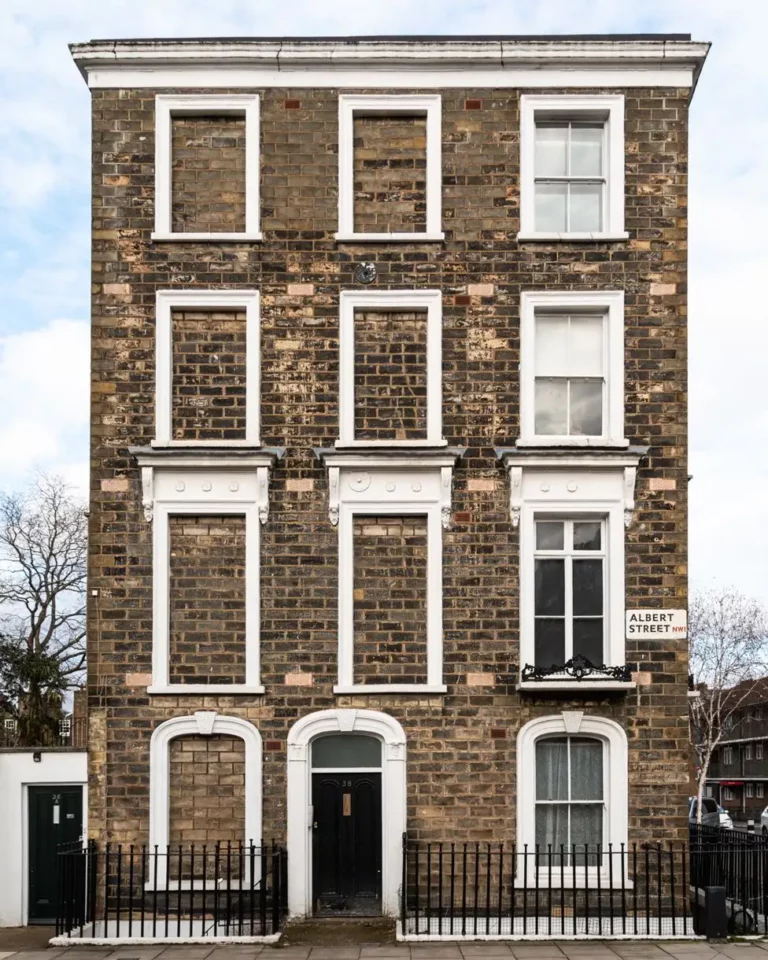WINDOW TAX
In England, William III once introduced the Window Tax, taxing houses based on the number of windows they had. That's why some houses have found the solution to brick the windows.
This tax was first imposed in England in 1696. It was intended to be a progressive tax in that houses with a smaller number of windows, initially, ten were subject to a 2 shilling house tax but exempt from the window tax. Houses with more than ten windows were liable for additional taxes which increased in line with the number of windows. The poorest, who were more likely to live in houses with fewer windows, were therefore in theory, taxed less.
This principle generally worked when applied to the rural poor, but failed to alleviate the tax burden on the urban poor. In towns and cities, it was unusual for the working classes to live in individual homes. They would usually live in large tenement buildings which, however, had been subdivided, were considered to be one dwelling house under the terms of the tax, and therefore subject to heavy window tax assessments.
Although deeply unpopular, the tax survived until the mid-nineteenth century. The negative effects of the lack of adequate light and ventilation were becoming so well documented that a popular campaign against the tax began to gain strength. A motion to repeal the tax failed by three votes in April 1850. A national campaign against the tax followed throughout 1850 and 1851, and it is against this background that Sunderland's petition should be seen. The tax was repealed in 1851.
Source: Ultimate Facts
🖼https://www.sash-windows.co.uk/daylight-robbery-the-taxing-problem-of-too-many-windows/
By *Muhammad Dangiwa*
In England, William III once introduced the Window Tax, taxing houses based on the number of windows they had. That's why some houses have found the solution to brick the windows.
This tax was first imposed in England in 1696. It was intended to be a progressive tax in that houses with a smaller number of windows, initially, ten were subject to a 2 shilling house tax but exempt from the window tax. Houses with more than ten windows were liable for additional taxes which increased in line with the number of windows. The poorest, who were more likely to live in houses with fewer windows, were therefore in theory, taxed less.
This principle generally worked when applied to the rural poor, but failed to alleviate the tax burden on the urban poor. In towns and cities, it was unusual for the working classes to live in individual homes. They would usually live in large tenement buildings which, however, had been subdivided, were considered to be one dwelling house under the terms of the tax, and therefore subject to heavy window tax assessments.
Although deeply unpopular, the tax survived until the mid-nineteenth century. The negative effects of the lack of adequate light and ventilation were becoming so well documented that a popular campaign against the tax began to gain strength. A motion to repeal the tax failed by three votes in April 1850. A national campaign against the tax followed throughout 1850 and 1851, and it is against this background that Sunderland's petition should be seen. The tax was repealed in 1851.
Source: Ultimate Facts
🖼https://www.sash-windows.co.uk/daylight-robbery-the-taxing-problem-of-too-many-windows/
By *Muhammad Dangiwa*
WINDOW TAX
In England, William III once introduced the Window Tax, taxing houses based on the number of windows they had. That's why some houses have found the solution to brick the windows.
This tax was first imposed in England in 1696. It was intended to be a progressive tax in that houses with a smaller number of windows, initially, ten were subject to a 2 shilling house tax but exempt from the window tax. Houses with more than ten windows were liable for additional taxes which increased in line with the number of windows. The poorest, who were more likely to live in houses with fewer windows, were therefore in theory, taxed less.
This principle generally worked when applied to the rural poor, but failed to alleviate the tax burden on the urban poor. In towns and cities, it was unusual for the working classes to live in individual homes. They would usually live in large tenement buildings which, however, had been subdivided, were considered to be one dwelling house under the terms of the tax, and therefore subject to heavy window tax assessments.
Although deeply unpopular, the tax survived until the mid-nineteenth century. The negative effects of the lack of adequate light and ventilation were becoming so well documented that a popular campaign against the tax began to gain strength. A motion to repeal the tax failed by three votes in April 1850. A national campaign against the tax followed throughout 1850 and 1851, and it is against this background that Sunderland's petition should be seen. The tax was repealed in 1851.
Source: Ultimate Facts
🖼https://www.sash-windows.co.uk/daylight-robbery-the-taxing-problem-of-too-many-windows/
By *Muhammad Dangiwa*




